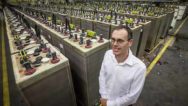
Island mansion for sale
Engels and Volkers are featuring this amazing off-grid home on a private island near Vancouver, British Columbia. If the US $15 million price tag is a little out of your reach – search landbuddy.com for people and places where you can pool resources and go off-grid.
The 3,600-square-foot house sits on a 120 acre spread, and has three bedrooms and four full bathroom. There is a separate 3,300-square-foot guesthouse with three bedrooms. The nearest town is the logging town community, Campbell River.
Accessories on the private island include a boathouse, 94-foot dock and a private helipad. Goose Landing Lodge has an assortment of fresh water spots including creeks, ponds and a small private lake. There are meandering trails, service roads and groomed pathways through the property.
It is located on Stuart Island, one of the Discovery Islands, which lie between northern Vancouver Island and the British Columbia coast. It is privately owned, with no ferry access. Most visitors arrive by float plane, private boat or helicopter.
The parcel of land is lined with temperate old growth rainforest , along a kilometer of shoreline.
All of the materials were brought by barge to the property, except for the on-site rock that was used as part of the construction of the house.
“All of the timber framing in the house was from one massive tree on Malcolm Island” in British Columbia, said and Engels and Volkers spokesman.
“It’s all off the grid,” he added. “It’s fully self-sustainable,” with underground plumbing and wiring, a generator building, professional sized greenhouses and raised garden beds for year-round cultivation.
The main house, known as Goose Landing Lodge,is the only house on the private island, and has a wraparound deck and offers water and forest views from nearly every room. It has an open floor plan with exposed cedar beams, vaulted ceilings and a rich array of stonework.
The chef’s kitchen is bright and modern, with stainless steel appliances and granite counters. The adjacent dining room opens to the great room, which shares a striking stone-encased dual-sided fireplace with the family room.







